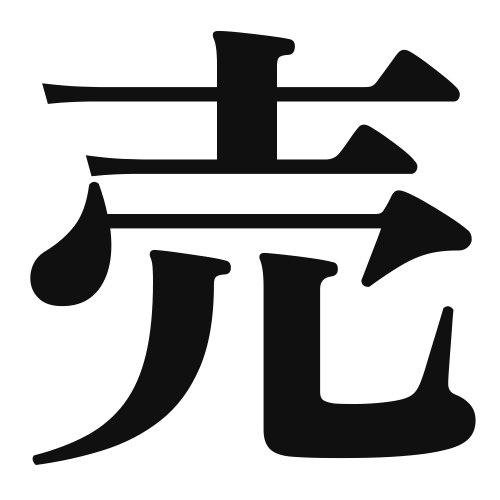1. Overview of Meaning
The kanji 売 (pronounced “bai” in Japanese) means “to sell.” It is commonly used in contexts related to commerce and trade, indicating the act of exchanging goods or services for money.
2. Formation and Radical
Formation of the Kanji: The kanji 売 is a phonetic-ideographic character (形声文字). It combines the radical for “to sell” with a phonetic component that suggests its pronunciation.
Radical: The radical for 売 is 八 (hachi), which can imply division or separation, reflecting the idea of parting with goods in a sale.
3. Examples of Usage
Common Words and Phrases: Some frequently used words that include 売 are:
- 売店 (baiten) – shop or stall
- 売上 (uriage) – sales revenue
- 売買 (baibai) – buying and selling
Example Sentences in Daily Conversation:
- この店は新鮮な野菜を売っています。 (This store sells fresh vegetables.)
- 彼は古い本を売りたいと言っていました。 (He said he wants to sell his old books.)
4. Synonyms and Antonyms
Similar Kanji: A kanji with a similar meaning is 販売 (hanbai), which specifically refers to the act of selling goods. The difference lies in that 販売 emphasizes the process of selling, while 売 can refer to the act itself.
Antonyms: A kanji with an opposite meaning is 買 (kai), which means “to buy.” This represents the action of acquiring goods or services rather than selling them.
5. Cultural and Historical Background
Relation to Japanese Culture: The concept of selling is deeply embedded in Japanese culture, where traditional markets and modern commerce coexist. The kanji 売 is often seen in various business contexts, reflecting the importance of trade in society.
Proverbs and Idioms: One common saying is 売り言葉に買い言葉 (uri kotoba ni kai kotoba), which translates to “words exchanged in selling and buying,” meaning that arguments can escalate quickly, similar to a negotiation in sales.
